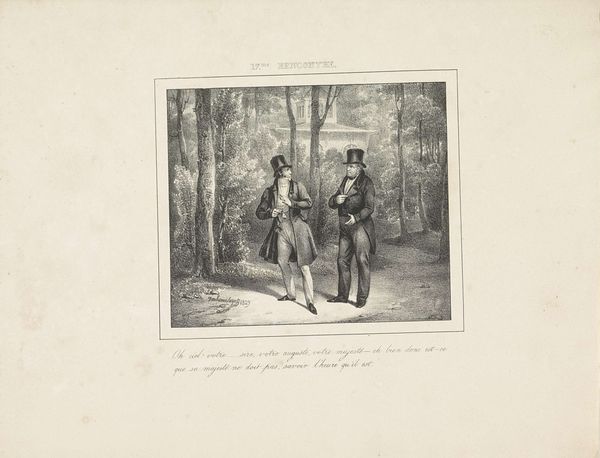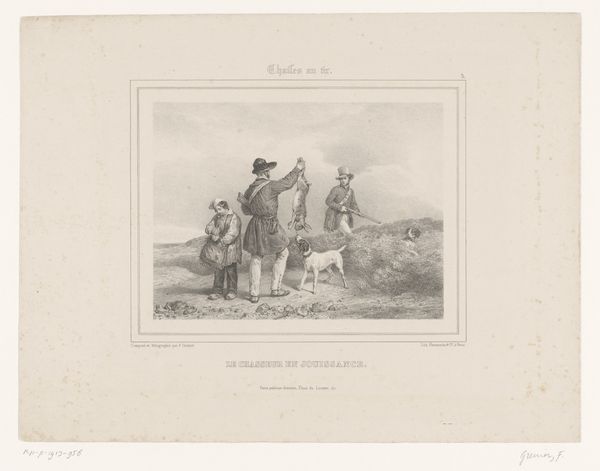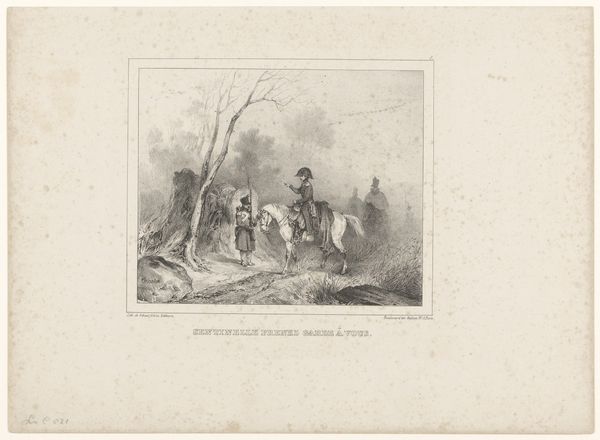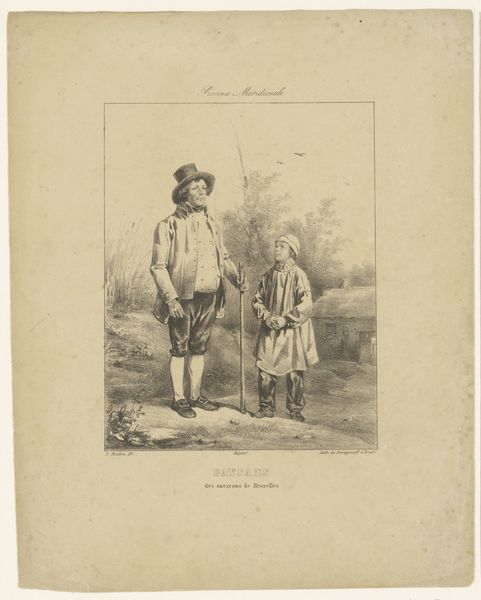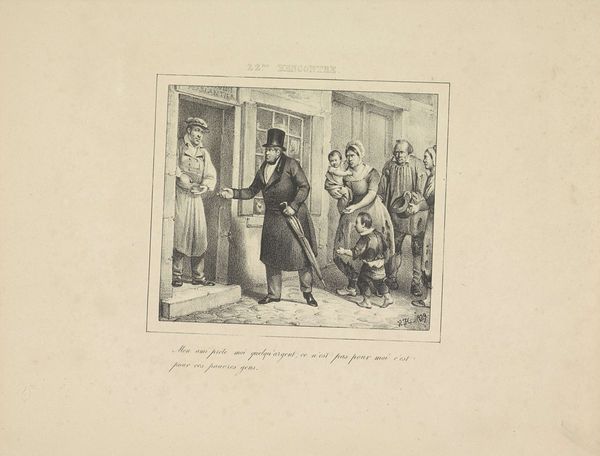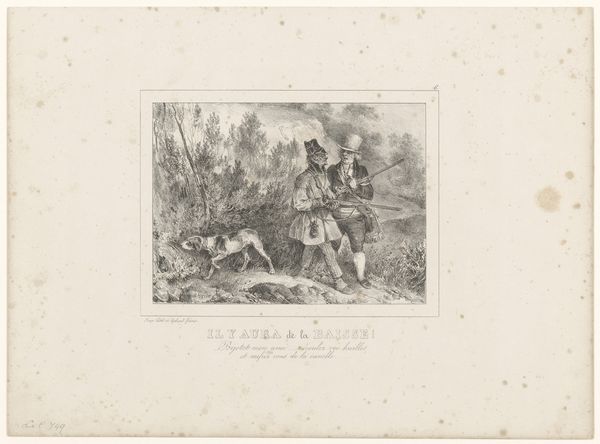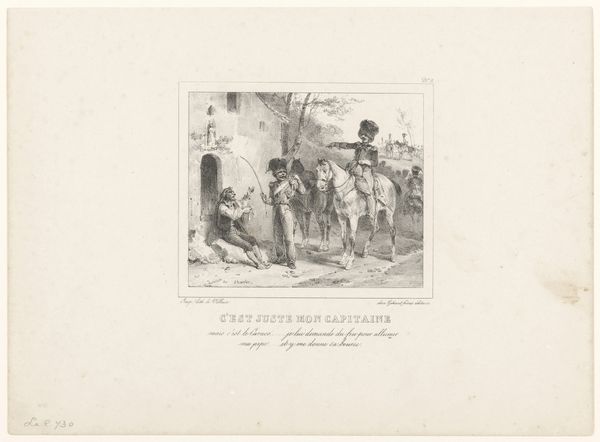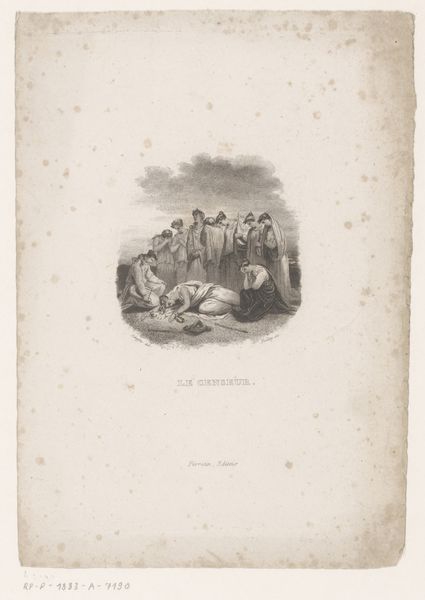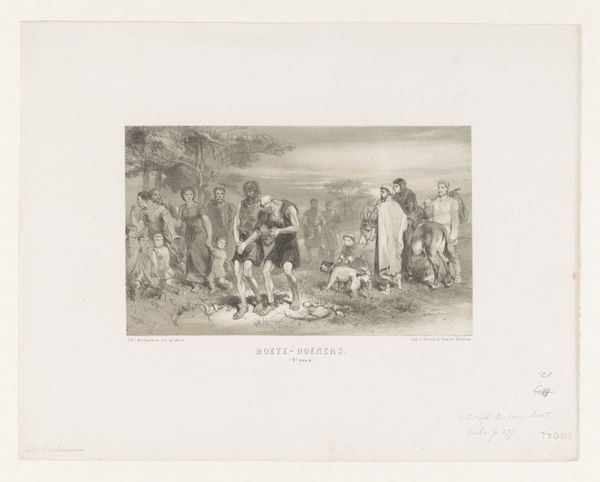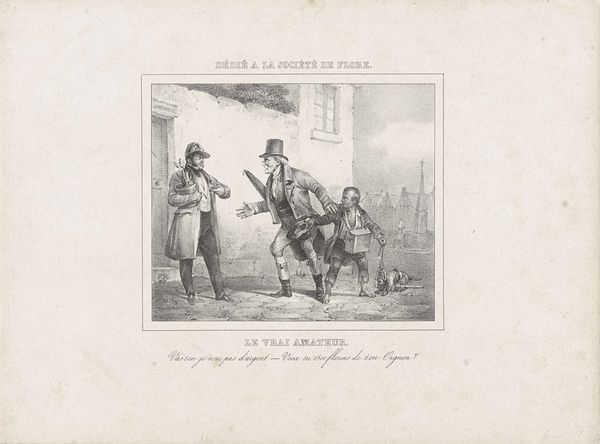
drawing, pencil
#
portrait
#
drawing
#
figuration
#
pencil drawing
#
romanticism
#
pencil
Dimensions: height 235 mm, width 305 mm
Copyright: Rijks Museum: Open Domain
Editor: This drawing, "Een kind weigert zijn hoed af te nemen voor koning Willem I, 1829," created by Jean-Louis Van Hemelryck around 1830, depicts an encounter between a king, a father, and his son. It's a delicate pencil drawing with an air of rebellion about it, given the child's refusal to doff his hat. How do we interpret this moment within its historical context? Curator: It’s a great observation! What you're seeing is more than just childish defiance. Think about the political landscape of the time. 1830 marks the start of the Belgian Revolution, during which the Southern provinces separated from the Netherlands. Editor: So, the child's refusal to bow isn’t just disobedience, it's a statement? Curator: Precisely! It embodies a burgeoning sense of national identity and resistance against Dutch rule. The artwork becomes a symbol of the political tensions simmering beneath the surface of everyday life. This image, then, speaks volumes about the public's sentiment towards authority. Editor: That adds a whole layer of complexity to what I initially saw as a simple portrait! I guess the context dramatically shifts our interpretation of the work. Curator: Absolutely! And it forces us to consider how art actively participates in shaping public opinion and documenting these shifts in political awareness. Is this a reflection of the artist's own opinion, perhaps? How might a work like this be circulated or suppressed depending on its messaging and political climate? Editor: I never considered that! Thank you; now, I see the piece as less about a single event and more about the socio-political narrative it encapsulates.
Comments
No comments
Be the first to comment and join the conversation on the ultimate creative platform.
